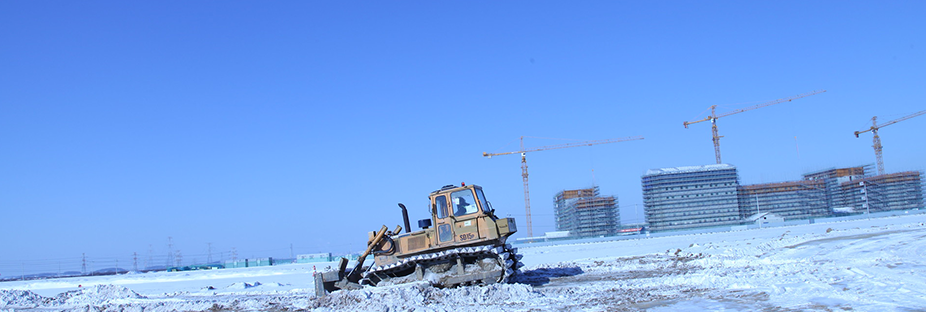In the first of this two-part series, we will focus on how winter weather can have a negative impact on your project’s budget. Planning ahead can help you avoid unnecessary costs and keep your jobs on track.
When temperatures drop, so can your profits. Higher heating rates, weather interruptions, and protection of your specialty equipment all mean one thing: big hits to your bottom line. Here are five factors to consider during the cooler months:
1. Reduced Worker Productivity
Cold temperatures can dramatically affect worker productivity, leading to extended project timelines and increased labor costs. In fact, construction workers had an absence rate of 2.2% due to injury or illness in 2023—a $29.9 billion in lost productivity to the industry.
How to Prepare:
- Provide heated break areas for workers so they can recharge when needed.
- Schedule outdoor tasks during warmer parts of the day.
- Rotate your work crews so you don’t get behind on the job and your teams don’t risk their health.
2. Equipment Maintenance Challenges
Cold weather affects heavy construction machinery by thickening fluids or causing battery failures. These maintenance issues can lead to costly repairs and delays.
How to Prepare:
- Conduct frequent maintenance checks and invest in cold-weather lubricants and antifreeze solutions for your equipment.
- Store machinery indoors whenever possible. You can also use thermal covers to protect against freezing temperatures.

3. Material Performance and Quality
Temperature-sensitive materials, such as concrete and paint, perform poorly in cold conditions. This almost always leads to structural issues and costly rework. During cooler seasons, inspecting materials for signs of damage is essential.
How to Prepare:
- Store materials in temperature-controlled environments to prevent exposure to cold temperatures.
- Schedule material deliveries in time to reduce onsite exposure to harsh weather.
4. Worker Safety Risks
Winter conditions increase the risk of construction workplace accidents, from slips on icy surfaces to frostbite and hypothermia. This leads to unexpected costs from medical expenses or project delays. In addition, the construction industry has the third-highest rate of all recordable cases of injury and illness in the workplace. It is especially critical that worker safety is addressed during winter.
How to Prepare:
- Learn the signs of cold stress to keep you and your team members safe.
- Implement strict safety protocols, including non-slip footwear and regular site inspections.
- Provide proper winter gear for workers and ensure everyone is trained in cold-weather safety practices.
5. Regulatory Compliance
Certain regions impose stricter regulations in winter. For example, you might need to remove snow, keep work areas heated, or use temporary enclosures. Breaking these rules can lead to fines or jobsite delays.
How to Prepare:
- Stay informed about local winter construction regulations.
- Factor compliance-related costs into your project budget.
- Schedule inspections to ensure your site meets all requirements.
Proactive Planning is Key
Construction projects during cold weather seasons don’t have to derail your budget if you’re prepared. By planning ahead, you can keep your project on track and avoid surprises.
Don’t miss the second part of this series, 5 Tips for Keeping Your Team Safe This Winter, which focuses on keeping your crew protected during the colder months. With the right preparation, you and your team will be ready for a safe and successful season.
